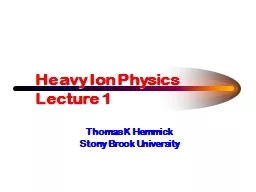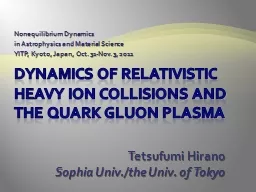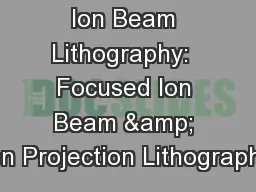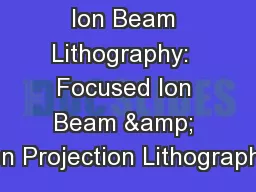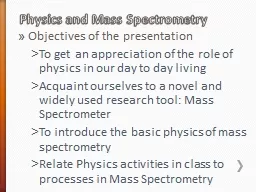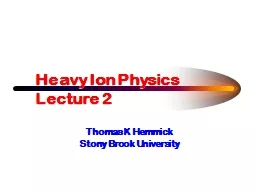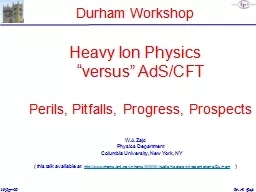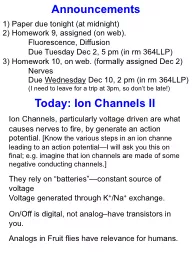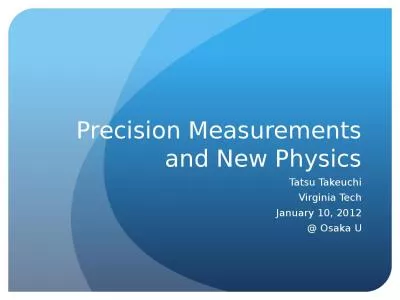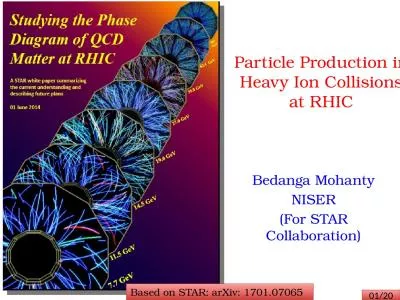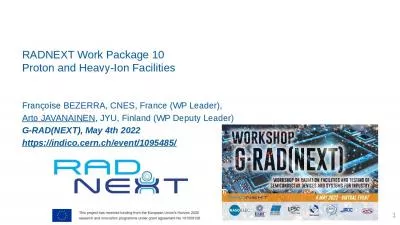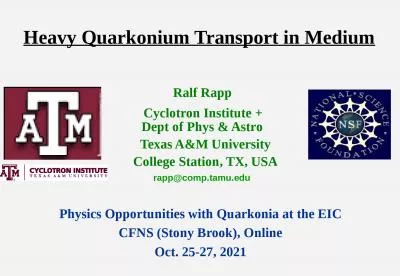PPT-Heavy Ion Physics Lecture 1
Author : aaron | Published Date : 2019-06-23
Thomas K Hemmick Stony Brook University COURAGE INTENTION 2 This talk is not targeted at the experts Students should EXPECT to understand Whenever the speaker fails
Presentation Embed Code
Download Presentation
Download Presentation The PPT/PDF document "Heavy Ion Physics Lecture 1" is the property of its rightful owner. Permission is granted to download and print the materials on this website for personal, non-commercial use only, and to display it on your personal computer provided you do not modify the materials and that you retain all copyright notices contained in the materials. By downloading content from our website, you accept the terms of this agreement.
Heavy Ion Physics Lecture 1: Transcript
Thomas K Hemmick Stony Brook University COURAGE INTENTION 2 This talk is not targeted at the experts Students should EXPECT to understand Whenever the speaker fails to meet this expectation. V.Kostyukhin. 1. Flavour. fractions . in . di. -jet system. V.Kostyukhin. . C.Lapoire. M.Lehmacher. Bonn . 14/06/11 Jet physics meeting. V.Kostyukhin. 2. Some theory. 1) . Heavy . flavour. pair creation. Will Witt. Introduction . –. Heavy Ion Physics. Heavy ion physics seeks to understand the behavior of strongly interacting matter (quarks and gluons) at extreme temperatures and densities.. Hadronic Matter. PlasMA. Nonequilibrium. Dynamics. in Astrophysics and Material Science. YITP, Kyoto, Japan, Oct. 31-Nov. 3, 2011. Tetsufumi. Hirano. Sophia Univ./. the Univ. of Tokyo. Outline. Introduction. Physics of the quark gluon plasma. Ziam Ghaznavi. CHE 384T Lithography. November 30. th. , 2017. 1. Outline/Agenda. Motivation. Ion – Solid Interactions. Overview of IBL Systems . Future Outlook. 2. Motivation. SEMATECH and the ITRS. Ziam Ghaznavi. CHE 384T Lithography. November 30. th. , 2017. 1. Outline/Agenda. Motivation. Ion – Solid Interactions. Overview of IBL Systems . Future Outlook. 2. Motivation. SEMATECH and the ITRS. Objectives of the presentation. To get an appreciation of the role of . physics . in . our day to day living. Acquaint ourselves to a novel and . widely used . research tool: Mass Spectrometer. To . introduce the basic physics of mass . Thomas K Hemmick. Stony Brook University. Outline of Lectures. What have we done?. Energy Density. Initial Temperature. Chemical & Kinetic Equilibrium. System Size. Is There a There . There. ?. The Medium & The Probe. “versus” AdS/CFT. Perils, Pitfalls, Progress, Prospects. W.A. . Zajc. Physics Department. Columbia University, New York, NY. . ( . this talk available . at . http://. www.phenix.bnl.gov/phenix/WWW/publish/zajc/sp/presentations/Durham. to . fire, by generate an action potential. . [Know the various steps in an ion . channe. leading to an action potential—I will ask you this on fina. l. ; e.g. imagine that ion channels are made of some negative conducting channels.]. Tatsu Takeuchi. Virginia Tech. January 10, 2012. @ Osaka U. Part 1. 温故知新. (論語). By scrutinizing existing Knowledge, . you can obtain New Knowledge. Example in Astronomy:. Discovery of Neptune:. Bedanga. Mohanty. NISER. (For STAR Collaboration). Based on STAR: . arXiv. : 1701.07065 . 01/20. Goals of Heavy-Ion Collision. Find out the phase structure of QCD phase . d. iagram . e. xperimentally. 1. Françoise BEZERRA, CNES, France (WP Leader), . Arto JAVANAINEN. , JYU, Finland (WP Deputy Leader). G-RAD(NEXT), May 4th 2022. https://indico.cern.ch/event/1095485/. . WP10 Heavy-ion and proton facilities – beam allocation. . Ralf Rapp. . Cyclotron Institute + . Dept of Phys & Astro. Texas A&M University. College Station, TX, USA. rapp@comp.tamu.edu. Physics Opportunities with . Quarkonia. at the EIC. Michelle Li. 20. th. Feb., 2017, Xiamen. Background. Heavy tumor burden of disease. :. survival population within 5 years is 7.49 million. ,. treatment expenses is over 17.6 billion per year.. Large radiation therapy (RT) demand.
Download Document
Here is the link to download the presentation.
"Heavy Ion Physics Lecture 1"The content belongs to its owner. You may download and print it for personal use, without modification, and keep all copyright notices. By downloading, you agree to these terms.
Related Documents

